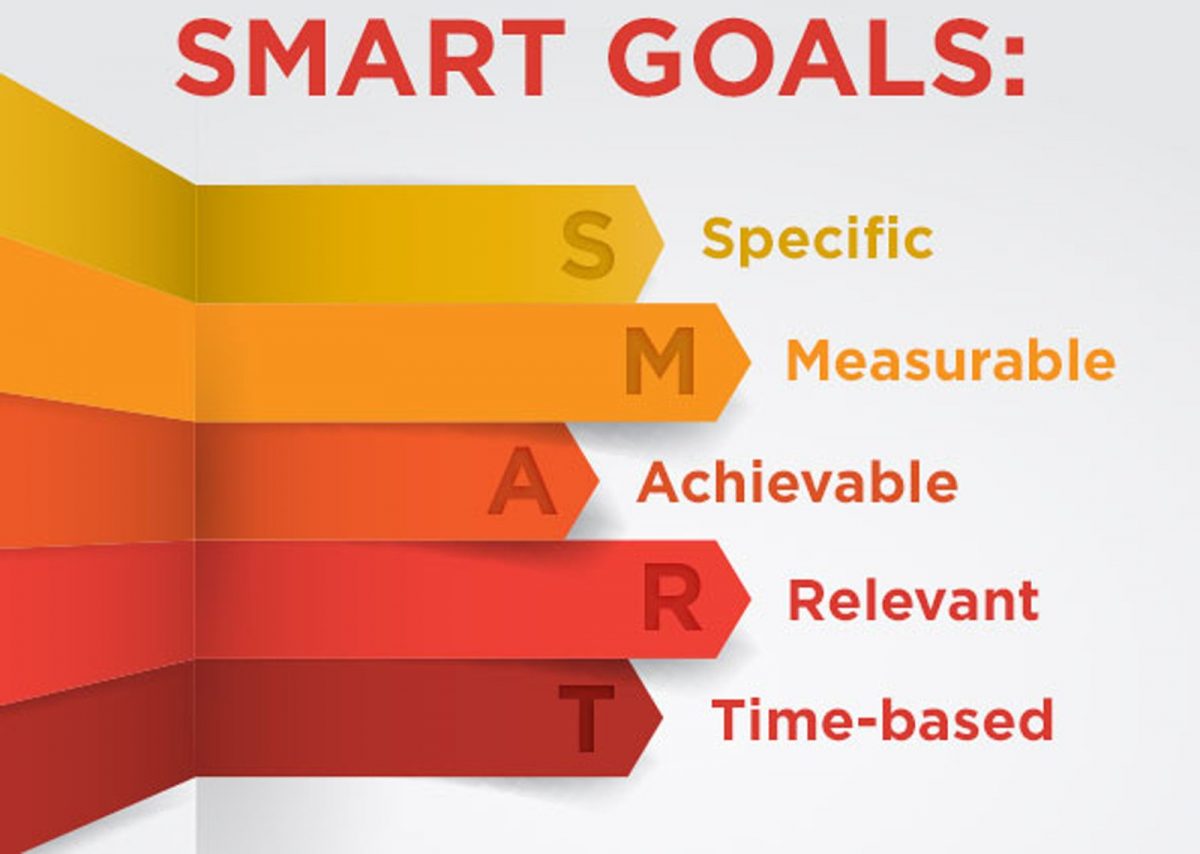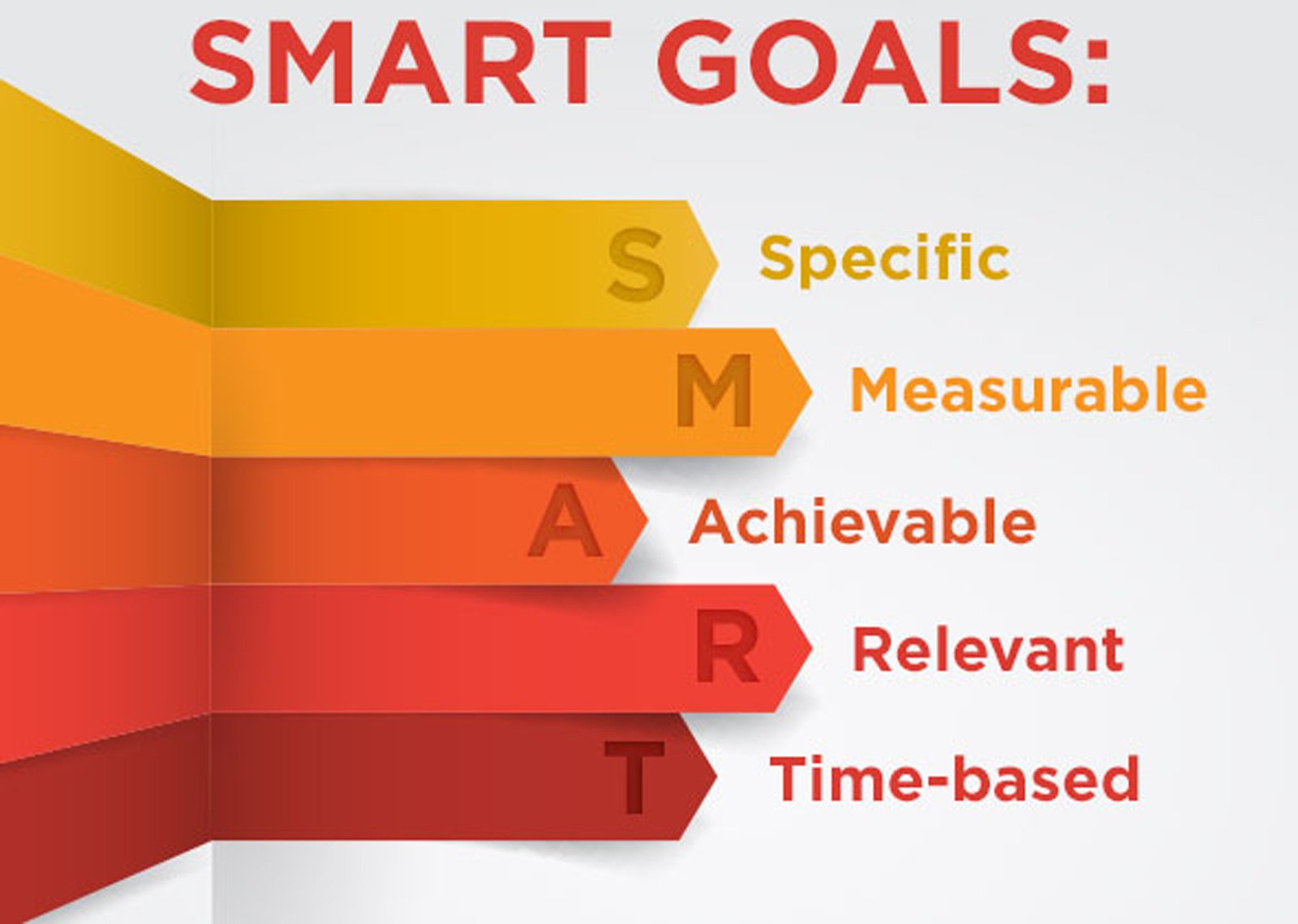Since their invention in 1981, SMART goals have become a way of life for leaders worldwide and for good reason. The most apparent benefits of SMART goals are that they improve communication when delegating a project as well as increase the chances the project will succeed.
While the base acronym offers up a lot of value on its own, after years of use, I’ve found some hidden benefits of SMART goals that can make them even more effective. This article will cover the basics and then dig a bit deeper so you can get even more out of your SMART goals process.
The basic benefits of SMART goals
The SMART acronym was written to help leaders delegate projects more effectively. For each piece of work you’re going to assign, make sure it is:
S – Specific
M – Measurable
A – Achievable
R – Relevant
T – Time-bound
Specific
To make sure your goal is specific, you’ll want to ask yourself the who, what, when, where, why of the project and make sure all of that is included in your project description. You’ll notice I crossed out “when;” that’s because it has its own letter in the acronym. “Why” is the project being done in the first place? “Who” is responsible for “what?” And “where” is the project being completed and delivered?
Measurable
For a goal to be measurable, it must be clear when the goal has been achieved and how well it has been done. If it’s a project, how will you know it’s complete? What deliverables need to be handed off? And how can you measure if the project was successful? Is there a KPI that reflects quality?
Achievable
Now that you’ve gotten specific and measurable in place, you should do a reasonableness check: is the goal you’ve set, the way it’s defined so far, achievable? Does the person working on the project have the skills and resources necessary to get the project completed successfully? Or are you setting them up to fail? Make sure the project has a good chance of succeeding.
Relevant
This is another reasonableness check. Sometimes, as you work on the definitions, projects mutate a bit as scope-creep kicks in. Is your project still important and relevant? Or has it turned into something a bit different and a bit less necessary? Be honest with yourself here. Sometimes scrapping a project is the best decision.
Time-bound
Any good project should have a deadline. Make sure to communicate the deadline and make sure that message is received by the person running the project. When you determine the deadline, you’ll want to solicit feedback from the person running the project in terms of what they feel is achievable and agree on a deadline that works for both of you. If you just set a deadline on your own you run the risk of messing up the achievable component of the SMART goal.
The key to unlocking value – “Specific”
The “Specific” component of SMART goals can help you and your team think deeply into the project you’re delegating. In fact, doing a very thorough exploration of your project from this perspective will unlock many of the other hidden benefits of SMART goals. Consider taking this opportunity to explore the project from the following perspectives.
The critical step in this phase is to think through the project and break it up into its smallest component tasks and milestones. If you’re planning out a project using project management software then you’re probably already accustomed to doing this. However, many organizations don’t have this kind of software implemented and available. Even if your organization does have project management software, smaller projects are frequently assigned without leveraging the software.
If you’re not using project management software it’s not the end of the world. You can still divide up your project into its component tasks and record them in a Word or Excel document (use your software of choice). For example, if you’re designing the homepage of a website, component tasks might include: make a list of images for the page, locate and purchase the images, research SEO keywords, write section headers, write the first draft of the content, revise and finalize the content, draw a wireframe of the page layout, etc. Not only will your team better understand the project, but they’ll also be better prepared to communicate with other project stakeholders in an easy-to-understand way.
Another benefit of breaking your project down into very small parts is that it helps your team create momentum as they move through the project. Everyone likes the feeling of completing something. If you don’t break down the project, there’s only one completion at the very end. The project itself may feel extra-large and overwhelming. But when you’ve broken everything down into bite-sized pieces, the mini-completions create satisfaction, momentum, and reduce the feelings of overwhelm.
The hidden benefits of SMART Goals – “Measurable”
When you’ve broken the project down to this level of detail this is where the hidden benefits of SMART goals kick in. Having a detailed list of tasks makes the “Measurable” part of the SMART goal more effective. It’s a lot easier to report on the status of a project if you’re clear on all the component parts; you’ll be much better equipped to answer the question, “How’s the project coming along?”
What tasks are checked off? Which are in process? Which milestones are complete and which are pending? What percentage of the work is complete? These questions become answerable if you’ve identified all the component tasks in the “Specific” phase of the project.
The hidden benefits of SMART Goals – “Achievable”
Basic thinking regarding the “Achievable” component of a SMART goal is primarily about making sure the volume of work being delegated is achievable in the time frame allotted. It will also address the skill level of the people taking on the project and ensure they have the necessary skills to complete the project.
Again, though, when you’ve broken down the project into all of its component tasks while working through the “Specific” piece of the goal, it enables a deeper level of thinking. If you’ll have multiple people from different departments involved in your project or even vendors from outside your organization, it’s very helpful to identify dependencies and resource constraints in advance. This will ensure requests are submitted in a timely fashion and lead times are met. If you see an impending roadblock you may not be able to overcome on your own, you can let management know you need support in advance. They can add resources, approve overtime, and leverage their influence to make sure you get what you need from other departments.
The hidden benefits of SMART Goals – “Relevant”
The reality of business is you’ll virtually never be managing only one project at a time. When you think deeper into “Relevance,” it can be a great reminder to evaluate the priority of the project you’re working on. By now, you’ll already have qualified that it’s a relevant enough project that it needs to be done. But have you analyzed its priority while taking into account all the other projects going on?
Where does this project fit in terms of importance and not just in terms of perceived urgency? Do you need to bump it up or down in the project hierarchy? Take an extra moment to evaluate the project, not in a vacuum, but in terms of how it relates to larger company and departmental goals. You’ll be surprised at how often you realize that a project, while relevant, isn’t being assigned the most beneficial priority.
The hidden benefits of SMART Goals – “Time-bound”
Finally, the “Time-bound” component of your SMART goal can also connect back to the deep dive you did on the “Specific” part of the goal. You will have already set a deadline for the project, making it time-bound. This will make it clear to your team members when they need to deliver the project.
However, you also have the opportunity to set deadlines for each significant milestone and task in the project. This will allow you to tell whether or not the project is trending towards being on time or late throughout the project. No one likes to be surprised that something is late at the very end. This additional insight will enable you and your team members to adjust resources and priorities throughout the project which will increase the likelihood of on-time delivery.
As you can see, SMART goals are pretty much always a good idea when you’re delegating a project, but there’s a wide range of potential benefits and outcomes. If you take the time to go extra deep while working on the Specific part of the acronym, it will unlock all sorts of hidden benefits of SMART goals in the Measurable, Achievable, Relevant, and Time-bound parts.







